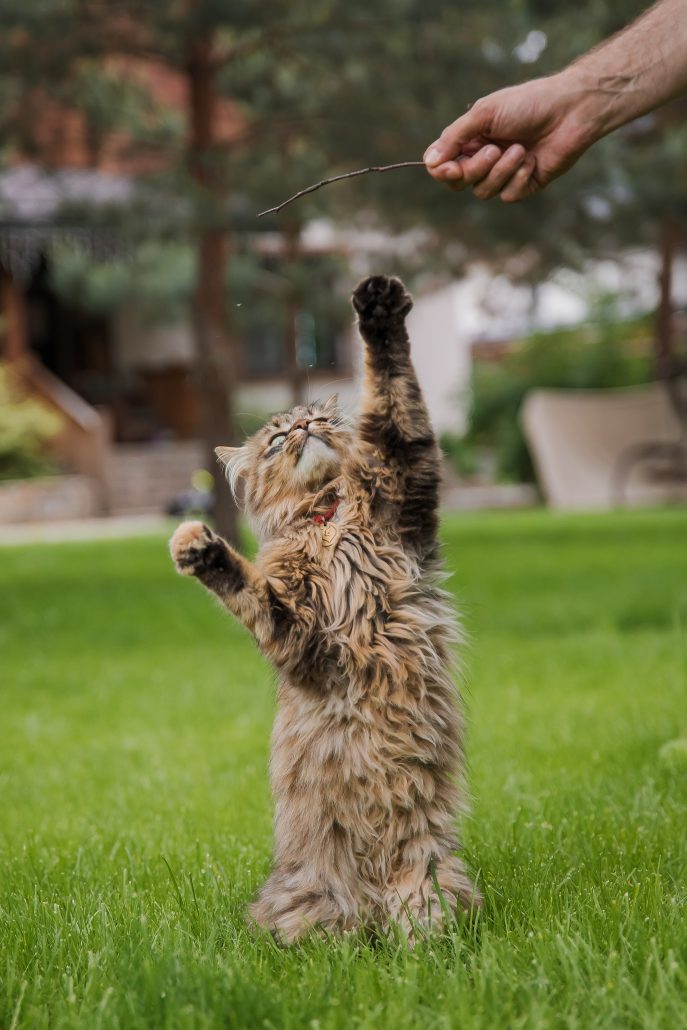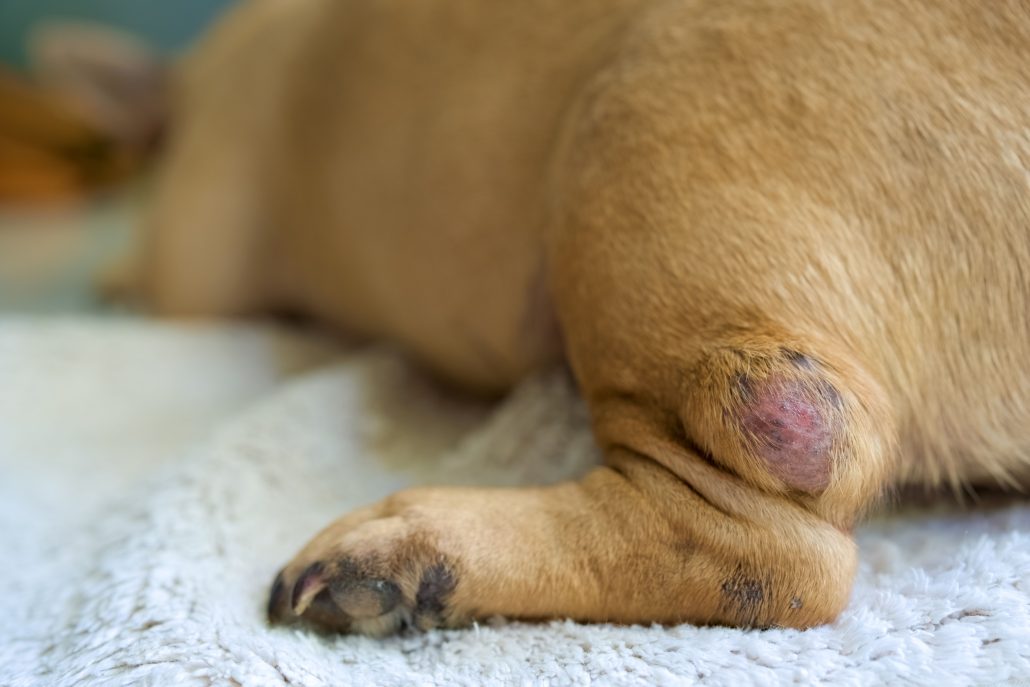
We want the best for our pets, and many of us are naturally tuned into everything they do. So, it’s only natural to feel a bit worried when we discover a new lump or growth. From a tiny bump on your cat’s belly to a soft mass under your dog’s fur, these discoveries can make us wonder: Is this normal, or should I be worried?
The good news is that lumps and bumps are often harmless. Many pets, especially as they grow older, develop these as a part of the aging process. But, sometimes a bump might need a bit more attention, and knowing when to check in with the vet can make all the difference for your pet’s health.
In this post, we’ll cover everything you need to know about all of the lumps and bumps you may find on your companion and when it’s time to get it checked with your local vet.
Malignant Vs Benign: Why Do Pets Get Lumps?
A lump, also known as a mass or tumour, is an abnormal growth of cells. They can develop for many reasons, including genetics, age and illness. While the presence of a lump can be concerning, it’s important to remember that not all lumps indicate a serious issue.
Benign Growths
Benign lumps are non-cancerous growths that can form for a variety of reasons.
- Genetics: Some breeds are prone to developing certain types of benign lumps. For example, lipomas are more common in overweight dogs, and sebaceous cysts are more frequent in older dogs with woolly coats.
- Age: As pets age, their cells are more likely to develop errors during replication, increasing the risk of abnormal growths.
- Inflammation or Infection: Abscesses, for instance, result from localized infections, often caused by bites, scratches, or foreign objects.
- Hormones: Perianal adenomas, benign tumours around the anus, are more common in non-desexed male dogs.
Malignant Lumps
On the other hand, malignant lumps are cancerous and can potentially spread to other areas of the body. These growths can vary significantly in appearance and may change rapidly. Early detection is essential and can make a significant difference in the outcome.
- Genetics: Some breeds are genetically predisposed to certain cancers. For example, mammary carcinomas (breast cancer) are more common in non-desexed female dogs.
- Environmental Factors: Exposure to carcinogens, such as certain chemicals or excessive sunlight, can damage DNA and increase cancer risk.
- Viruses: Certain viruses, like papillomavirus, can cause warts, which are usually benign but can sometimes become cancerous.
- Weakened Immune System: Older pets or those with compromised immune systems are more susceptible to developing cancerous growths.

Common Types of Lumps To Look Out For
When it comes to our furry friends, it’s important to know what growths you might encounter. While it is good to have an understanding, it’s important to remember that only your vet can accurately diagnose and treat any growth.
Benign Lumps
- Lipomas: Lipomas are soft, fatty tumours that are commonly found in older, overweight dogs. They typically feel like squishy lumps under the skin and are generally harmless. While lipomas can grow in size, they often don’t require treatment unless they become bothersome or affect your pet’s mobility.
- Skin Tags: Skin tags, also known as hamartomas, are small, benign growths that look like flaps of skin. They are harmless but might require removal if they become irritated or your pet is constantly scratching them.
- Sebaceous Cysts: These small, firm, pimple-like bumps occur when a sebaceous gland (an oil gland in the skin) becomes blocked. They can appear anywhere on the body and often resolve on their own. However, if they become infected, inflamed, or cause discomfort, your vet may recommend draining or removing them.
- Warts: Warts are common, especially in puppies and older dogs, and they often appear as small, cauliflower-like growths on the skin. These growths are typically benign and tend to resolve on their own, but if you see warts that change in appearance or number, a vet visit is recommended.
- Histiocytomas: These are raised, red, button-like lumps that commonly appear in young dogs, often on their limbs, head, or ear flaps. They are benign and usually heal without treatment. However, it’s always recommended to have any new lump checked by a veterinarian to ensure it is a histiocytoma and not a more serious type of growth.
- Other Benign Growths: Other benign lumps you may encounter include abscesses, which are swollen areas filled with pus, hematomas, which are localized collections of blood, and granulomas, which are small areas of inflammation. While these growths are generally not serious, they may require veterinary attention if they don’t resolve on their own.
Malignant Lumps
- Mast Cell Tumours: Mast cell tumours are one of the most common forms of cancer found in dogs. They can appear as firm lumps on or under the skin and can vary in colour and size. Early detection is crucial, as some mast cell tumours can be aggressive. If you notice any unusual lumps, especially ones that seem to change, consult your veterinarian.
- Mammary Tumours: Mammary tumours are a particular concern for female dogs, especially those that have not been spayed. These tumours can vary in severity, but spaying your dog can greatly reduce the risk of developing these tumours.
- Other Malignant Growths: Beyond mast cell and mammary tumours, melanomas, can appear as dark pigmented lumps, fibrosarcomas, are aggressive connective tissue tumours, and squamous cell carcinomas, manifest as skin lesions and can pose serious health risks.

Tips For Identifying Lumps & When To Go To The Vet
Even if there is no cause for concern, being able to identify and assess lumps and bumps is crucial for early detection and treatment, especially as they age.
- Stay Observant: Make it a habit to regularly check your pet for lumps and bumps, especially during grooming sessions or even cuddles! Remove any collar and harnesses and use your fingers to feel through your pet’s skin. Gently massage your fingers from head to toe and tail. Be sure to check skin fold, lips, ears, armpits and in their mouths. Pay attention to any new growths, changes in existing lumps, or shifts in your pet’s behaviour. If your furry friend seems to be scratching, licking, or showing signs of discomfort around a specific area, it’s worth a closer look.
- Know the Characteristics: Take note of the size, shape, and texture of any lumps you discover. Are they firm or soft? Are they movable or fixed in place? Understanding these characteristics can provide valuable clues for your vet. A soft, movable lump is often more likely to be benign, whereas a hard, immovable lump might warrant further investigation.
- Monitor Changes Over Time: Keep an eye on any lumps or bumps you find, noting any changes in size, colour, or shape. If a lump grows rapidly, starts to bleed, or changes in appearance, it’s time to contact your vet. Tracking these changes can help your vet make a more accurate diagnosis.
- Check for Additional Symptoms: Be on the lookout for any additional symptoms that may accompany a lump or bump. This could include swelling, redness, discharge, or signs of pain when touched. You know your pet best and if your pet exhibits any unusual behaviours, such as loss of appetite or lethargy, it’s important to seek veterinary advice.
- Document Your Findings: Keep a record of any lumps and bumps you find, including photographs, descriptions, and dates of observation. This information can be incredibly helpful for your vet in assessing your pet’s health and determining any necessary next steps.
- Consult Your Veterinarian: When in doubt, always check with your vet. They know best and will perform a thorough examination, conduct necessary tests, and provide guidance tailored to your pet’s specific needs. Early intervention is key, so don’t hesitate to seek professional advice if you have concerns about any lumps or bumps.

Keeping Your Pet Healthy and Happy
While many of these growths may be benign, staying informed and vigilant can help you catch any potential issues early on. Regular checks, understanding what’s normal for your pet, and knowing when to consult a veterinarian can make a significant difference in your furry friend’s health and happiness.
If you ever have concerns about a lump or bump, don’t hesitate to reach out to us The House Call Vet. Our experienced team of Brisbane vets are here to provide compassionate care and thorough examinations to ensure your pet remains healthy and vibrant. Schedule an appointment today, and let us help keep your beloved companion feeling their best!

